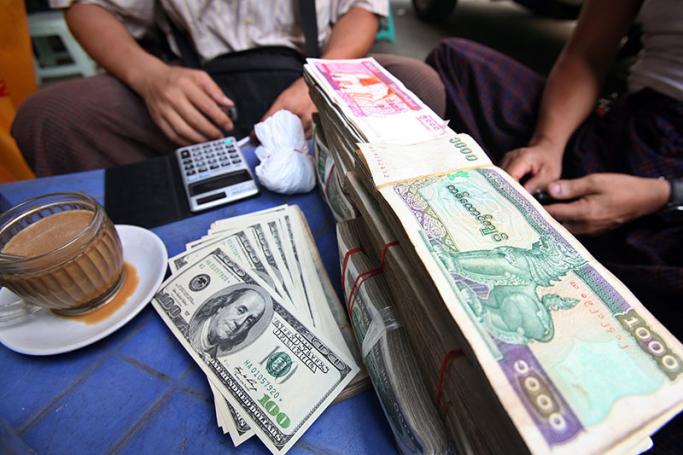A foreign advisor to the Myanmar government has told people concerned about the weakening Myanmar Kyat not to worry.
In a call-out on Facebook, Sean Turnell, explained that while there were worries about the weakening of the Kyat against the dollar - currently at about 1,325 Kyat to the dollar - the changes were easily explained.
As Mr Turnell said:
"At the moment, there is some anxious discussion about the exchange rate of the kyat. I think these anxieties, while natural given Myanmar's monetary history, are largely unwarranted. Here are my reasons:
1. Much of the movement in the Kyat exchange rate is against the US dollar. But this movement is not at all unique to Myanmar. Since the election of Trump (even before it) the $US has been appreciating against just about all currencies, and especially those of emerging markets. Seen in this light, the decline in the US price of the kyat is not that dramatic at all. In fact, it's rather dull.
2. Properly viewed in real (that is, inflation adjusted terms) the Kyat is still way, way above historical lows. Indeed, there is a strong case for suggesting that it is still slightly overvalued viewed in this way!
3. There is, in any case, much to be said on having a lower exchange rate as part of a broad development story. This was certainly a strategy employed by China, the tigers, Japan etc. Can't go too far - but having an extra competitive edge this way can be a help rather than a hindrance to becoming a manufacturing centre.
4. This is all part of a seasonal cycle. The kyat always tends lower around this time of year. So, important not to read too much into movements that are largely just part of a natural cycle.
5. Finally, flexible prices (including those of a currency) are normal and central to a market economy. Flexible exchange rates indeed can be especially valuable in, depending on circumstances, protecting the interests of farmers and others in the face of commodity price movements. This is not theory. Australia is now on the longest run of economic growth experienced by any economy, ever. Yet, like Myanmar, we are an agricultural and commodity country in significant ways. One explanation to this success has been the flexible $A, which moves up and down with commodity prices - and thus (once these prices are converted back into $A) protects our farmers, traders...our entire economy. The flexible $A has saved Australia again and again!
Time as always to be vigilant. But let's not sweat the things we don't need to!"
You are viewing the old site.
Please update your bookmark to https://eng.mizzima.com.
Mizzima Weekly Magazine Issue...
14 December 2023
New UK Burma sanctions welcome...
13 December 2023
Spring Revolution Daily News f...
13 December 2023
Spring Revolution Daily News f...
12 December 2023
Spring Revolution Daily News f...
11 December 2023
Spring Revolution Daily News f...
08 December 2023
Spring Revolution Daily News f...
07 December 2023
Diaspora journalists increasin...
07 December 2023
Koh Tao murder case prisoners see no change in their status on Thai King’s birthday












